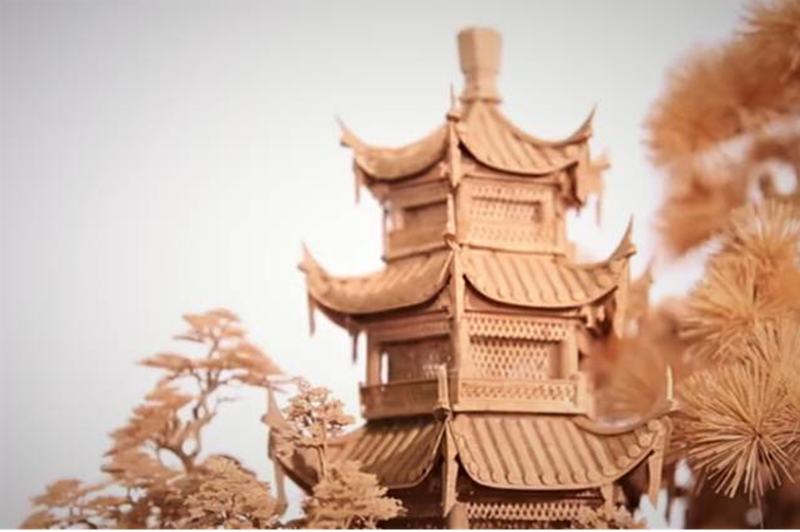
The cork carving work. [Photo/fujian-szwhg.chaoxing.com]
Cork carvings are produced in Fuzhou, Fujian province. This traditional fine arts project is listed on the second batch of the national-level intangible cultural heritage representative project list.
Cork carvings originated in the early years of the Republic of China and originated in Xiyuan village, located in the northern suburbs of Fuzhou. In the early 20th century, Wu Qiqi and other woodcarvers from Xiyuan village used the cork layer from the cork oak tree, imported from Spain and other countries along the Mediterranean coast, as raw materials. They combined traditional Chinese carving techniques to create cork carvings. The cork bark layer, known as cork, is valued for its light and soft texture, fine texture, and natural and elegant color. This craft is commonly referred to as cork carving.
The craftsmanship process is very rigorous. Artists use knives instead of brushes and employ traditional carving techniques such as round carving, relief carving, openwork carving, and micro-carving to create a variety of works with diverse forms. The themes of cork paintings include world scenery, famous landmarks, figures, and animal forms.
Cork carving artists apply traditional Chinese painting techniques, using techniques such as scattered perspective and aerial view layout, to skillfully combine the exquisite traditional Chinese carving techniques with the beautiful and profound artistic conception of Chinese painting.
Cork carvings have been passed down from generation to generation in the village, experiencing nearly a hundred years of trials and tribulations. Through years of production and creation, a large number of skilled craftsmen have emerged among the cork carving artists in Xiyuan village.
 Editor:Qiu Xiaochen
Editor:Qiu Xiaochen